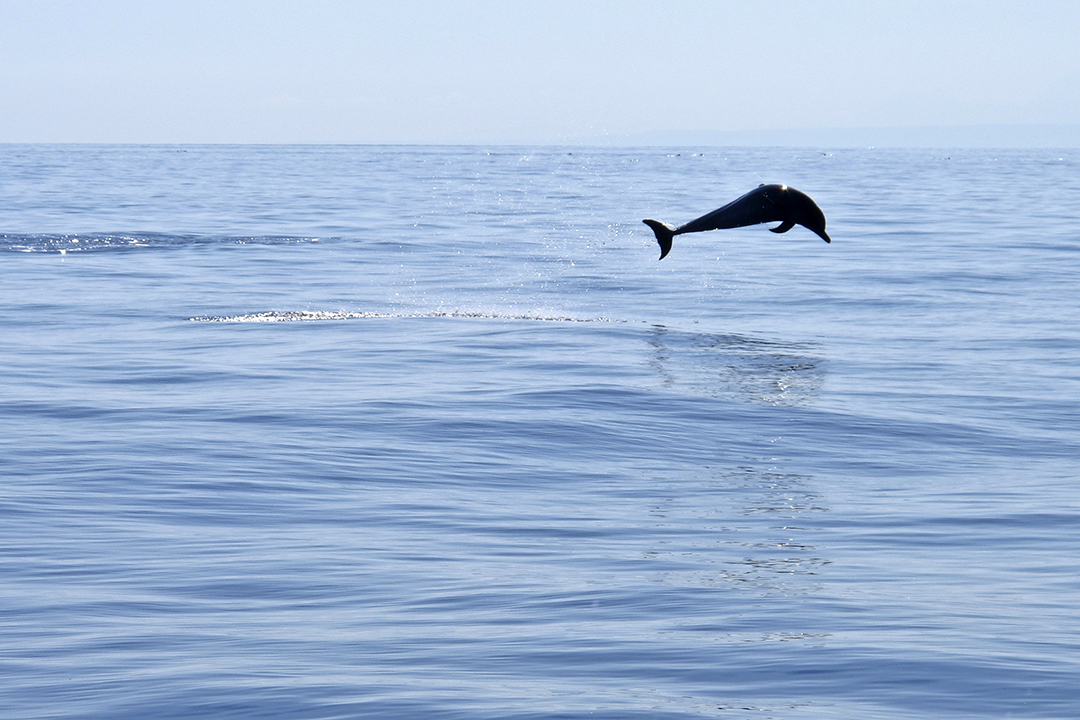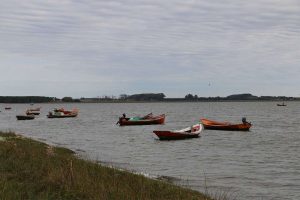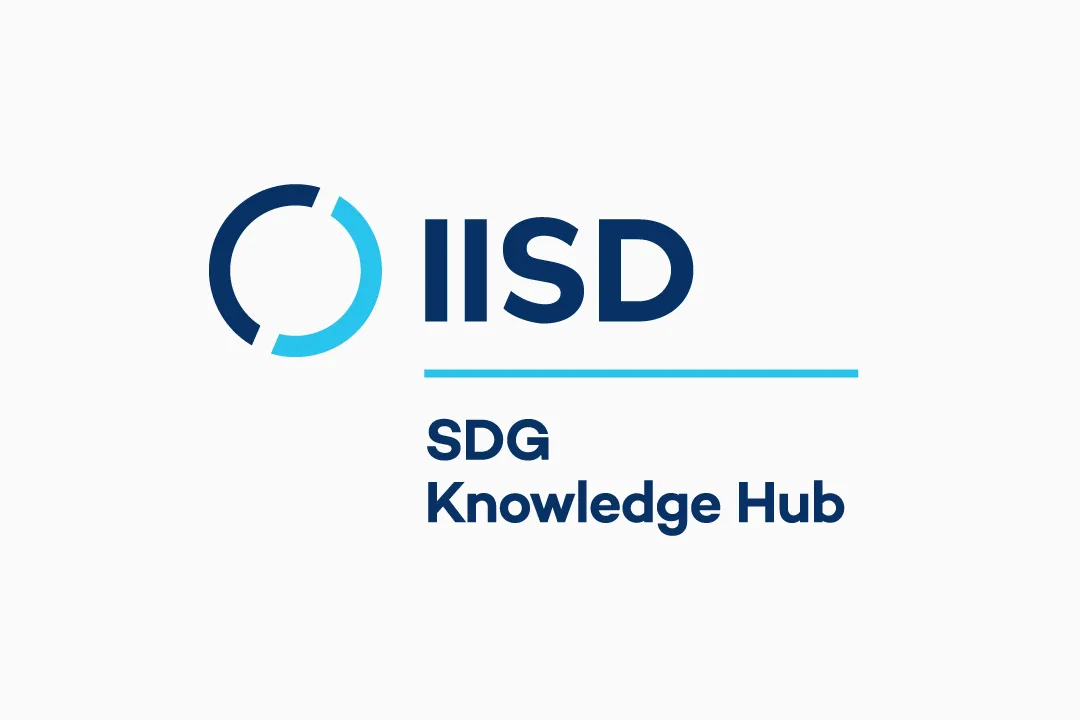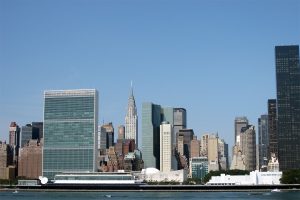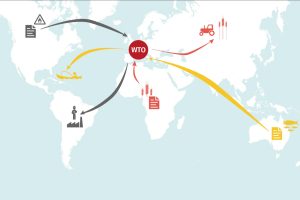Five meetings in 2017 are pivotal for global efforts to save the ocean, including the July 2017 meeting of the High-level Political Forum for Sustainable Development (HLPF). Parties to the Port State Measures Agreement (on illegal, unreported and unregulated (IUU) fishing) convened for the first meeting of the Parties in May, to set forth its implementation. In June, the first-ever Ocean Conference convened at UN Headquarters in New York. In July, the HLPF will review progress towards the Sustainable Development Goal (SDG 14) on life below water, as one of seven SDGs to receive special attention. In parallel to the HLPF, a UN preparatory committee will discuss recommendations to the UN General Assembly on negotiating a treaty on the management of marine biological diversity in the high seas. And, in December, the World Trade Organization will hold its eleventh Ministerial Conference, during which many are hoping fisheries subsidies will be on the agenda. While these meetings are not the only important ocean events occurring in 2017, they will influence how stakeholders, from governments to civil society to individuals, will approach ocean issues going forward.
This policy update reviews themes threading through these meetings as reported by the SDG Knowledge Hub. It provides readers with background knowledge, recalls how the international policy community has framed prominent ocean issues, and looks forward to the next steps. This update follows the structure used in the ‘2017 HLPF Thematic Review of SDG 14’ (HLPF Brief), lightly canvassing the issues of pollution, acidification and climate change, marine spatial planning/marine protected areas (MPAs), small-scale fisheries (SSF), subsidies, research, and linkages.
To begin, the Ocean Conference is to be celebrated simply for existing. The guest article ‘SDG at Sea‘ recounts the rise of the ocean in the global sustainable agenda, going from the absence of ocean issues in the Millennium Development Goals (MDGs) to becoming the largest substantive section of the ‘The Future We Want,’ to eventually securing a stand-alone goal among the 17 SDGs. The June Ocean Conference was a key moment for the global ocean policy community, which came together to identify and discuss solutions to ocean challenges. It concluded with a negotiated ‘Call for Action’ and over 1,300 voluntary commitments announced by an array of stakeholders (governments, civil society and the private sector) to tackle ocean-specific problems.
In its coverage of the meeting, the Earth Negotiations Bulletin observes that the most significant result of the conference may be “the profound awareness raised at the highest political level about the vital importance of the ocean for our very survival and the concrete sense of hope…” that we can save it. The Conference was largely considered a success in building momentum for the implementation of SDG 14 as a central, rather than isolated, component of the 2030 Agenda. Going forward to the HLPF review, policymakers can leverage this momentum and visibility.
The HLPF Brief presents the ocean issues under SDG 14 to be addressed in its review. The Brief notes that the purpose of the meeting is to examine “what we know about each target and report on approaches to implementation and current actions.” It points out that we have the knowledge to take first steps towards sustainability solutions, and concludes that “a common theme” for all ocean issues “is the need for real commitment to cooperate across geographical, institutional and sectoral boundaries, particularly for on-the-ground implementation.” In other words, we have everything we need to begin addressing threats to ocean health, so let’s work together to take action.
Pollution
Regarding pollution, the HLPF Brief covers both marine debris and nutrient pollution. On debris, the Ocean Conference generated a lot of noise (not the underwater variety, thank goodness), mostly through high-visibility corporate announcements and a UN campaign replete with striking images and information on how plastics and microplastics threaten the ocean ecosystem and human health. Leading up to the conference, at the World Ocean Summit in February, the UN launched the Clean Seas Campaign, which calls for an end to single-use plastics, along with a ban on microplastics in cosmetics by 2022. Separately, a three-year initiative called the ‘New Plastics Economy’ announced a US$2 million prize for innovation in packaging to keep plastics out of the ocean. This three-year initiative supported by the Oak Foundation and The Eric and Wendy Schmidt Fund for Strategic Innovation, among others, has some big-name core partners including Amcor, The Coca-Cola Company, Danone, MARS, Novamont, Unilever, Veolia and PepsiCo.
At the Ocean Conference, Dell and Adidas also made commitments. Dell created the first commercial global ocean plastics supply chain, and will reuse plastic collected from beaches, coastal areas and waterways as packaging for its products. Adidas will make one million pairs of shoes from ocean plastic in 2017, equivalent to 11 million plastic bottles, and five million pairs in 2018.
A number of countries also pledged to confront marine pollution, which was the focus of numerous side-events and a partnership dialogue at the Conference. More than 20 countries signed on to the Clean Seas Campaign. Indonesia pledged a 70% reduction in marine waste within eight years. As of 13 June, the Conference’s Registry of Voluntary Commitments included 196 commitments on plastics recovery/recycling/reuse, 138 commitments on plastics product bans or restrictions, 198 commitments on coastal clean-ups and 84 other commitments related to plastics.
Overall, the issues discussed during the Ocean Conference highlighted the close relationship of land and sea, not only for plastic pollution, but also for nutrient pollution resulting from agricultural run-off and untreated wastewater, among others. While the HLPF Brief on oceans notes that ways to control pollution exist, it cites the need for new approaches to contain microplastics and transboundary pathways for waste. It will be interesting to see how the Conference’s momentum on the issue will roll into the HLPF. Beyond the review, we can hope that the big fish will keep jumping in the boat by announcing bigger and better initiatives confronting ocean pollution.
Acidification and Climate Change
The HLPF Brief opens on this issue by stating that “failure to act on climate change and related changes in the atmosphere will have serious implications for the ocean.” It points out what has already been observed: gradual and extreme warming events, rising sea levels, higher acidity, reduced mixing of ocean water and resulting de-oxygenation.
Leading up to the Ocean Conference, Ambassador Torres of Chile highlighted the important links between climate and the ocean in an SDG Knowledge Hub guest article, titled ‘The Ocean as the New Frontier of Climate Action.’ He discussed the ‘Because the Ocean ‘ initiative and underscored the importance of “building a strong link between ocean conservation and Nationally Determined Contributions (NDCs), the basic building block of climate action and the main vehicle for Paris Agreement implementation.” Twenty-two countries have joined the initiative, and through it are supporting the IPCC special report on oceans as well as the development a plan for the ocean under the UNFCCC.
As UN General Assembly (UNGA) President Thomson said at the Ocean Conference, climate and ocean health are “two sides of the same coin,” and naturally, the Paris Agreement on climate change took center stage regarding recommendations for what actions should be taken. The partnership dialogue on ocean acidification, numerous side events and multiple country interventions at the Ocean Conference highlighted that while there are measures to adapt to the impacts of climate change and to increase ecosystem resilience, very little can be done to adapt to ocean acidification. As noted in the Earth Negotiations Bulletin Analysis, “mitigating carbon dioxide emissions by implementing the Paris Agreement is the most effective approach to addressing both ocean warming and acidification.” Overall, the Conference gave countries a platform to call for additional research on the issue and to voice support for the climate accord, especially considering the recent US announcement to withdraw from the Paris Agreement.
Marine Spatial Planning/Marine Protected Areas (MPAs)
Marine spatial planning was also the focus of an Ocean Conference partnership dialogue. At the event, Convention on Biological Diversity (CBD) Executive Secretary Cristiana Pașca Palmer highlighted opportunities for synergistic implementation especially through the expected achievement of Aichi Target 11, which shares an ambition with SDG target 15.5 – 10% of coastal and marine areas conserved through protected area systems by 2020.
In line with this ambition, at the Ocean Conference, countries committing to designate and expand MPAs included Argentina, Canada, Chile, Gabon, Greece, Israel, Italy, Jamaica, Lebanon, Malaysia, the Republic of Korea, Spain, and South Africa. The HLPF Brief lists MPAs coverage to date at 4.12%, against the 10% target, noting also that the establishment of ecosystem based management programmes has “flourished at national or regional scales.”
The HLPF Brief points out, however, that “While MPA coverage has grown significantly over the past decade, geographical distribution is still imbalanced, and coverage still lags behind terrestrial equivalents.” It also notes the difficulties in managing such protected areas, and, among its recommendations, calls for support for “Biodiversity Protection Beyond National Jurisdiction and development of conservation and management frameworks for the high seas.”
This recommendation signals to the fourth and final prepcom on BBNJ – (the formal name is Preparatory Committee for the development of an international legally binding instrument under the UN Convention on the Law of the Sea (UNCLOS) on the conservation and sustainable use of marine biological diversity of areas beyond national jurisdiction (BBNJ) – that the international policy community is watching for its recommendations to the UN General Assembly in July. The pressure is on to, inter alia, identify the most important marine areas to conserve as well as how to really protect them. Some have called an agreement on BBNJ the Paris Agreement for the ocean, but some countries remain wary of a new treaty that may interfere with how they use the ocean.
The difficulties of enforcing MPAs (as well as terrestrial parks) and determining which areas are critically important to protect are not new challenges. An SDG Knowledge Hub guest article on the Mediterranean Marine Protected Areas Network (MedPan) discusses these challenges, noting that “many sites are not actually implemented and there are no regulations in place to curb existing pressures or enough means to enforce them.” Noting how area based management tools (ABMTs) like MPAs have become agents of sustainable development and critical pathways towards achieving global goals and agreements, the article offers up MedPan as a successful model, perhaps replicable in other regions.
We will see if ABMTs and MPAs become sticking points at the BBNJ prep com, and possibly, in an internationally legally binding agreement on the high seas.
Fish: Fisheries Management, Small Scale Fisheries (SSF), and Subsidies
The HLPF will also address fisheries management, small scale fisheries (SSF), and subsidies. On management, the HLPF Brief highlights that wild caught or farmed seafood provides more than 3.1 billion people with almost 20% of their average per capita intake of animal protein. Yet, 31% of exploited marine fish stocks are overfished (10% more since 1970), while production from aquaculture continues to grow annually (currently 77 million tonnes). Sustainable fisheries will grow from the implementation of agreed management schemes under instruments such as UNCLOS, the UN Fish Stocks Agreement, the FAO Code of Conduct for Responsible Fisheries (CCRF) and regional fishery management arrangements. It will be important that countries continue joining and implementing the FAO Agreement on Port State Measures, which targets IUU fishing. PSMA entered into force last year and parties met for the first time at the end of May to begin implementation.
HLPF Brief recommendations on fisheries also include assistance to Small Scale Fisheries (SSF). The Brief presents SSF as a pathway to sustainable fisheries, food security, as well as economic security, especially for small island developing States (SIDS) and least developed countries (LDCs), if they are properly supported and resourced. Market access for SSF remains a central concern and desired goal.
On subsidies, the HLPF Brief states that “fisheries subsidies are as high as $35 billion worldwide, of which $20 billion are categorized as contributing to overcapacity and overfishing.” Writing on the issue, leaders of the Varda Group point out that such subsidies are the “premier example of governments purposefully and willingly continuing to spend money to achieve the exact opposite of what SDG 14 intends.”
SDG 14.6 calls for, by 2020, the prohibition of “certain forms of fisheries subsidies which contribute to overcapacity and overfishing” and the elimination of “subsidies that contribute to IUU fishing.” The HLPF Brief recommends “at least, a minimum common denominator that could be agreed and included in trade agreements” coming out of the upcoming WTO ministerial. The ‘Call for Action’ presents more aggressive language, calling for decisive action, “including through accelerating work to complete negotiations” at the WTO. At the Ocean Conference, the UN Conference on Trade and Development (UNCTAD), the Food and Agriculture Organization of the UN (FAO) and UN Environment announced a voluntary commitment that aims to remove or reduce harmful fisheries subsidies.
The world will have to wait until the WTO ministerial convenes in December to find out if the language, voluntary commitments and agreed outcomes will be enough to spur an outcome supporting sustainable fisheries and achievement of SDG 14 targets under the WTO.
Research
The HLPF Brief points out that “much of the knowledge we need is available for the first steps” on tackling challenges to sustainable ocean management, but beyond initial action, there is a great need for additional research to understand the issues at-hand. To mark World Oceans Day, and during an Ocean Conference partnership dialogue, countries and other stakeholders made calls and announcements for increasing ocean science. UNESCO called for 2021-2030 to be declared the ‘International Decade of Ocean Science for Sustainable Development.’ The agency registered a decade of ocean science as a voluntary commitment in the registry, with the goal of generating science-based solutions and informed policy, for what it calls, “The Ocean We Need for the Future We Want.”
In an SDG Knowledge Hub guest article, Directors at the Tara Expeditions Foundation supported this call by UNESCO, noting that “in addition to finance and resource provision, we need to go beyond silos and build transdisciplinary international programs using the best available science.” With threats to the ocean growing, they argue, the international community must do more. In another guest article, the Founding President and CEO of the World Ocean Council suggests a greater role for ocean-based industries. He discusses how companies that rely on the ocean, for instance for shipping, offshore energy generation and fisheries, can support data collection and monitoring through the tens of thousands of vessels and platforms and millions of kilometers of seafloor cables they operate.
As the international community negotiates pathways and partnerships towards improved monitoring and understanding of ocean issues, it will also need to share this data through greater international collaboration and, according to the HLPF Brief, “ocean data and information networks.”
Linkages
The Ocean Conference illustrated how raising the profile of one issue can spur progress on others. For a quick overview, a keyword search of the Ocean Conference’s voluntary commitments shows that 214 commitments register the word food (SDG 2), 38 use the word poverty (SDG 1), 276 mention climate (SDG 13), and 313 reference land (SDG 15). Linkages like these may be what keeps momentum going for action on a sustainable ocean over the remaining 13 years for SDG implementation, and beyond.
Beyond the HLPF review and other ocean-focused meetings this year, the future of humanity – the air we breath and the food we eat – depends on the health of ocean. In his famous poem titled ‘Fern Hill,’ Dylan Thomas concludes by reflecting on the eternity of the ocean. He writes, “Time held me green and dying. Though, I sang in my chains like the sea.” The lines remind us that humanity will not bear witness to this passage of time if we are unable to preserve the seas.
This policy brief draws on insights from Catherine Wahlén, Lynn Wagner and many other contributors to SDG Knowledge Hub.
Issues
- Agriculture & Food Security,
- Protected Areas,
- Access to Genetic Resources & Benefit-sharing,
- Follow-Up and Review,
- International Negotiations,
- Conservation,
- Biodiversity,
- National Action,
- Ecosystem Approach,
- Climate Change,
- Global Biodiversity Strategy & Targets,
- Economics & Investment,
- Sustainable Use,
- Governance,
- Monitoring & Evaluation,
- Oceans & Coasts,
- Sustainable Development
